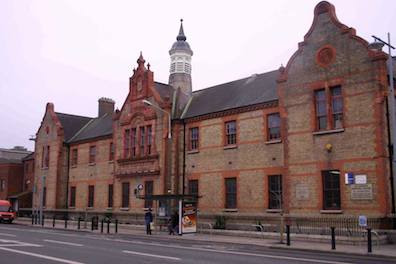In Calypso Bloom passes by "Saint Joseph's National
school" and hears the "Brats' clamour. Windows open. Fresh air
helps memory." In Hades the funeral procession takes
him by another "National school," this one called Saint
Andrew's though it is not named in the narrative. The National
Schools were public schools, funded by the government, that
served students of the lower middle class and emphasized
vocational education. In theory, at least, they embraced all
religious denominations and strictly separated religious
instruction from the rest of the curriculum.
The National School
system, established by an Act of Parliament in 1831, was
administered by a National Board of Education consisting of two
members each from the Catholic church, the Presbyterian church,
and the Church of Ireland. For early 19th century Irish
Catholics emerging from the
hedge
school arrangements necessitated by the 18th century penal
laws, the schools represented a chance of equal opportunity and
social integration. But all three churches resisted the
constraints on their ability to shape the course of education.
Although they failed to change the law, they did manage to
influence practice within particular schools, and many parents
sought out schools that catered to their particular faith.
According to an article in the 1 September 2017 issue of the
Irish
Examiner, by the end of the 19th century denominational
adherence was threatening to undermine the system.
St. Joseph's school was at 81-84 Upper Dorset Street, and St.
Andrew's was at 114-21 Great Brunswick Street. These buildings
still stand today, though neither one remains a school. And
the National School system in Ireland continues, still
government-run and non-denominational.

